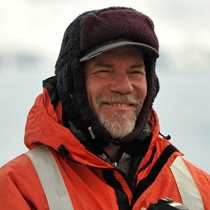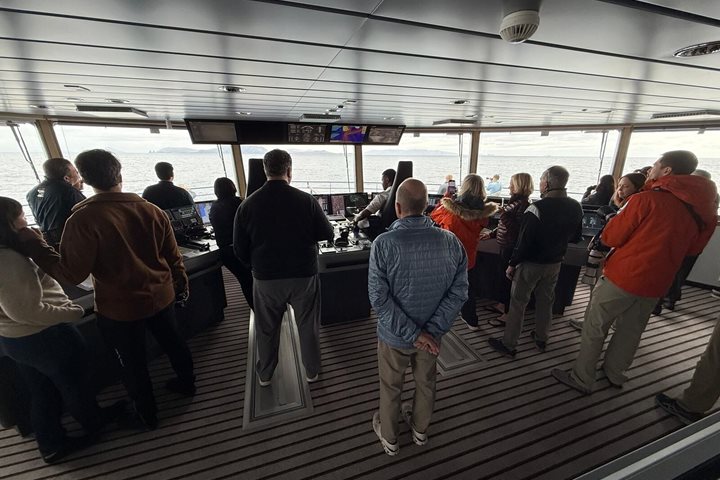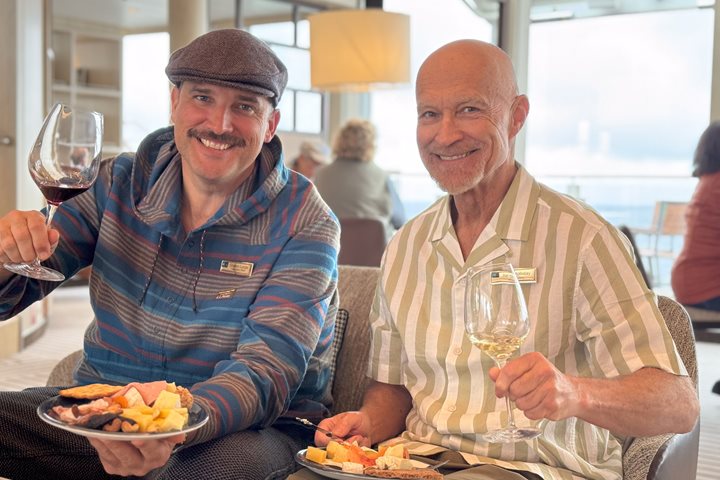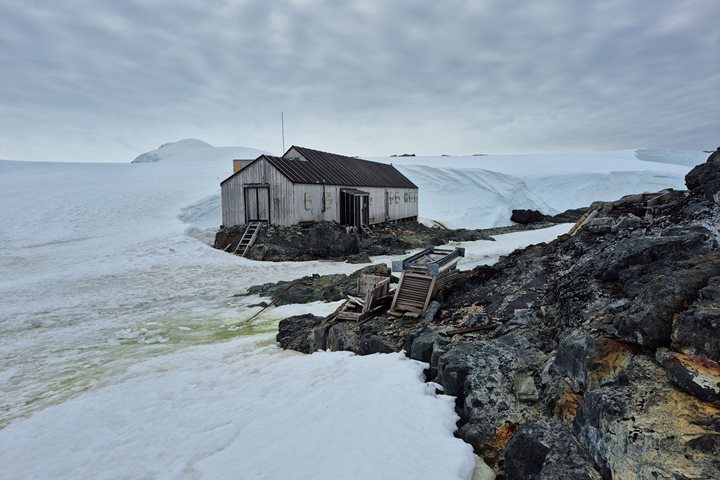Our first day heading south to Antarctica was a quiet one on board National Geographic Explorer. We spent time resting and preparing for the adventures ahead. The wind was up, which kept a few of us down but brought out lots of seabirds, including five species of albatross. In the main lounge, we enjoyed a presentation by the photo team as well as some hands-on instruction to get us all ready to shoot. In the afternoon, we had a briefing on proper interaction with wildlife and practiced a decontamination session in the mudroom to ensure we wouldn’t introduce alien species to the pristine shores of the White Continent. Now we’re ready to go!
2/28/2025
Read
National Geographic Resolution
Northbound Drake Passage, Cape Horn, and the Beagle Channel
This morning, we had a later start than usual after a late night enjoying the crew show. Our galley team gifted us with a fulfilling brunch. We then had a brilliant forum about climate change with the participation of our panel of experts onboard. Afterward, our expedition leader called us to the bow to see Cape Horn, which was only a few miles ahead. The good weather allowed us to have a smooth and fast crossing, allowing extra time to swing by Cape Horn, the most southern tip of the Americas. Over the PA system, Steven provided a very interesting description of the historical importance of this area, then Pablo read a beautiful poem, a memorial to the seaman lost at sea. We could see the monument in the distance, two metal sheets that depict an albatross in flight. During the afternoon, we enjoyed Madalena’s presentation about Women in Antarctica. This was an incredible voyage through the struggles and delays of allowing women to participate in science and logistics in Antarctica. We entered the Beagle Channel around 17:00 and we encountered black-browed albatrosses, cormorants, dolphins, and whales. On our final approach to the beautiful city of Ushuaia, we passed by Les Eclaireurs Lighthouse and some of the seals that live in the Bridges Islands Archipelago.







